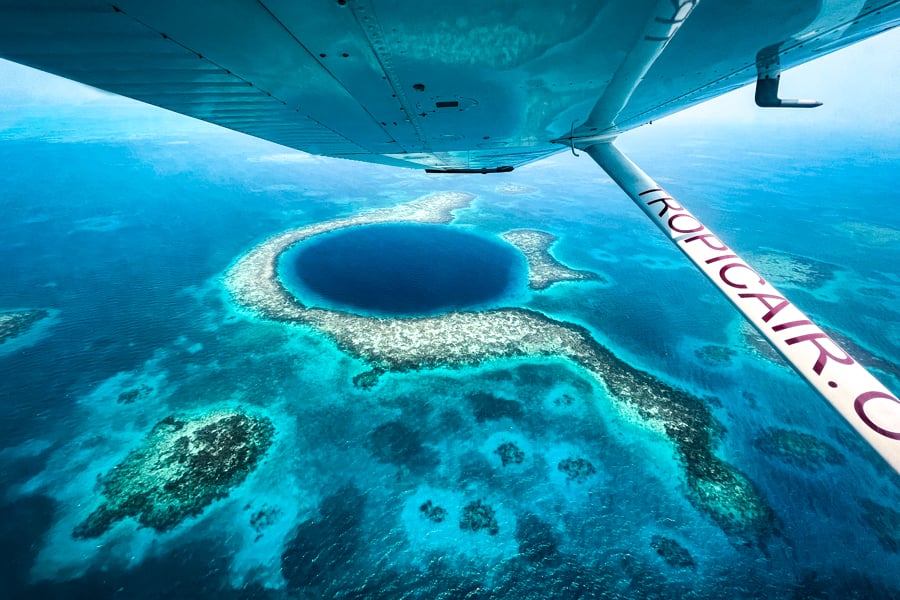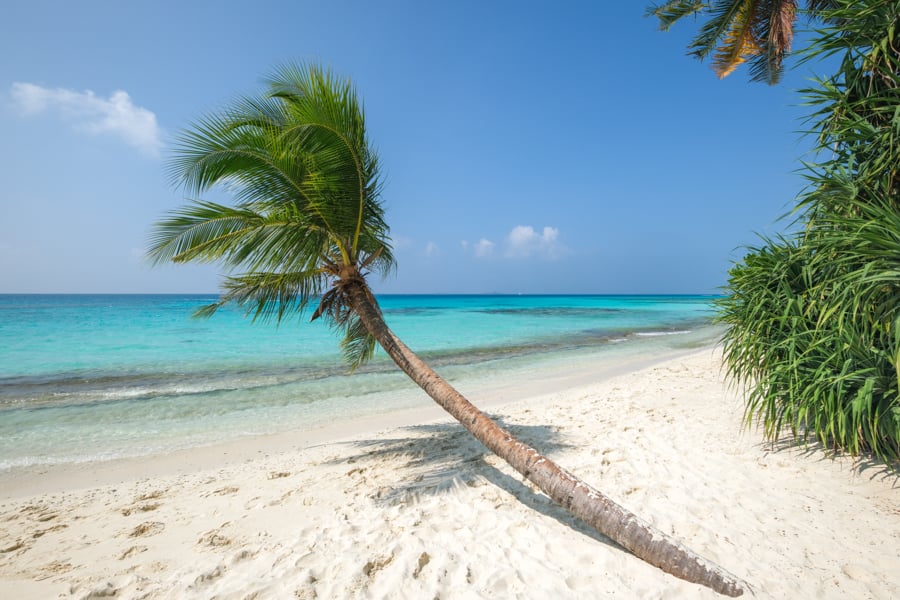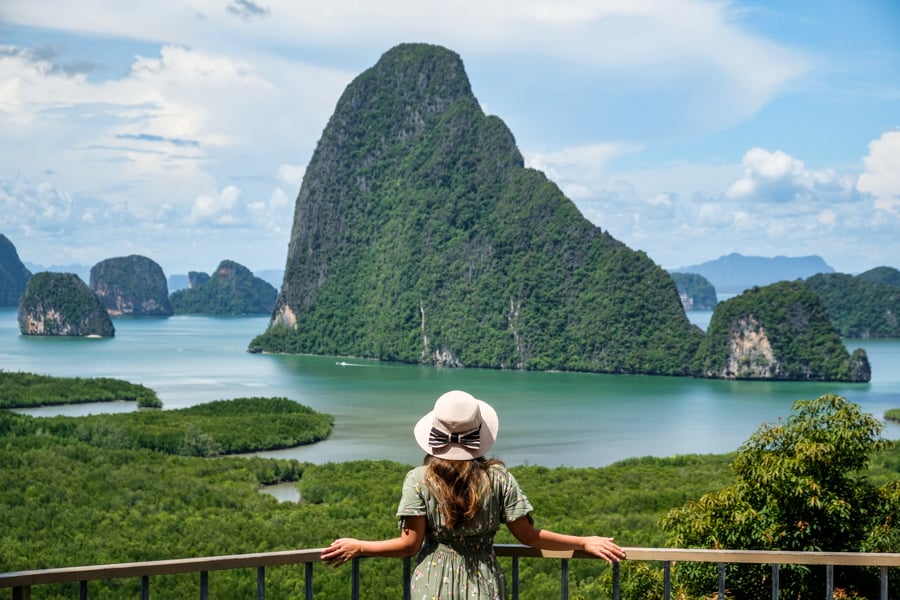Great Blue Hole Belize: Scenic Flight & Photos
The Great Blue Hole in Belize is probably one of the most famous travel photos ever. It’s also the biggest underwater sinkhole in the world, and it looks even more amazing if you see it in person! Touring the Blue Hole is one of the top ‘bucket list’ things to do in Central America. You can enjoy a scenic flight over the reef in a small plane or helicopter, and take photos of it from above, or hop on a boat and go scuba diving inside the sinkhole itself. I got a chance to fly over the Great Blue Hole in a little prop plane recently, and it was an amazing experience! We circled the Blue Hole several times at low altitude to see what it looks like up close, and then flew over some other sights in the Caribbean Sea. This travel blog will share my experience with the Blue Hole Belize flight, which company to use, flight costs and safety thoughts, and everything else you need to know before you go. Then, I’ll share some fun facts about this natural wonder in the Caribbean! What Is The Great Blue Hole? The Great Blue Hole is an underwater sinkhole. It’s believed to have been a cave at some point in time when the water levels were lower, but then it became submerged as the water levels rose. Think of the Blue Hole kind of like the cenotes in Central America, except this one is underwater instead of on land, and it’s filled with seawater instead of fresh water. Where Is The Great Blue Hole In Belize? The Great Blue Hole is located in the Caribbean Sea. It’s part of the Central American country of Belize, which is a little country sandwiched between Mexico and Guatemala. The Blue Hole is part of the Belize Barrier Reef, which is actually the second largest coral reef system in the world, after the Great Barrier Reef in Australia. More specifically, the Blue Hole is located in a marine atoll called Lighthouse Reef, about 75 kilometers (45 miles) off shore from Belize City, so you need a boat, plane, or helicopter to get there. Blue Hole Belize Flight: What To Expect Scenic flights over the Blue Hole are available every day of the week in Belize, departing from either Belize City Municipal, Caye Caulker, or San Pedro. They’re currently offered by three main companies: Tropic Air, Maya Island Air, or Astrum Helicopters. My flight with Tropic Air began with the quickest and easiest check-in process ever, and then I was handed a very unique and fancy plastic boarding pass with some fun facts about the Great Blue Hole printed on it. I was kind of wishing I could keep this as a souvenir from my flight! After a short wait in the lobby, one of the pilots came over and gave me a quick rundown of what sights we would see in Belize and where we would be going on a map, and then we headed out to the tarmac for our flight. A very unique boarding pass for my Great Blue Hole Belize flight If this is your first time flying in a puddle jumper plane, you’re in for a very exciting ride. This was the tiniest prop plane I’ve ever seen! It was only a 4-seater, with two pilot seats in the front and two passenger seats in the back. I later found out that Tropic Air also has 11-seater planes for some of their tours, so it probably just depends how many people are in your group. As it turns out, I was by myself this time. I booked my flight as a shared tour, but I ended up being the only passenger there, so I got to enjoy a private tour instead, while a student pilot practiced the route with help from a more experienced second pilot. The smallest plane I’ve ever seen! Preparing for takeoff I have to say, lifting off the ground in a plane this small is a bit scary at first, but you forget about that once you’re in the air. Right away, we had amazing views of Belize City, followed by some small islands, mangroves, coral reefs, and the turquoise blue water of the Caribbean Sea. I’ve been able to see these kinds of sights from above many times with today’s drones, so it wasn’t completely new to me, but it’s still different being up there yourself and seeing it with your own eyes. After about 20 minutes of flying over the ocean, we reached the Great Blue Hole of Belize. It’s so impressive in person! My photos don’t really do it justice at all. Every seat in the plane had great views out the window. The pilot flew down to a low altitude and circled the Blue Hole several times, so I could see it up close and take pictures. It was perfect. After leaving the Great Blue Hole, we passed a rusty old shipwreck stranded on the reef, which was another nice photo opportunity. Our total flight time was only about 1 hour from takeoff to landing, but it didn’t feel too rushed at all. We got to see a lot of things during the flight, and I was able to take tons of pictures. My only gripe is the windows on the plane, which were too thick, scratched, and dirty for serious photo work. I asked beforehand about doing a doors-off flight (or at least opening a small window), but neither of the two prop plane companies I asked were able to do that. I didn’t check with Astrum Helicopters, but that might be an option with them. Maybe I’m being too picky. I just think something as fantastic as the Blue Hole really calls for opening a door or window so you can take the best pictures possible. Overall, though, it wasn’t a huge deal. I was still able to get some decent pictures, and the flight itself was amazing! Tropic Air vs
Great Blue Hole Belize: Scenic Flight & Photos Read More »





